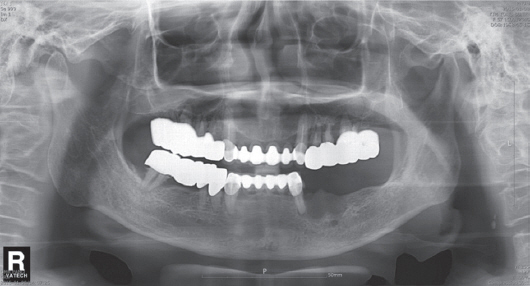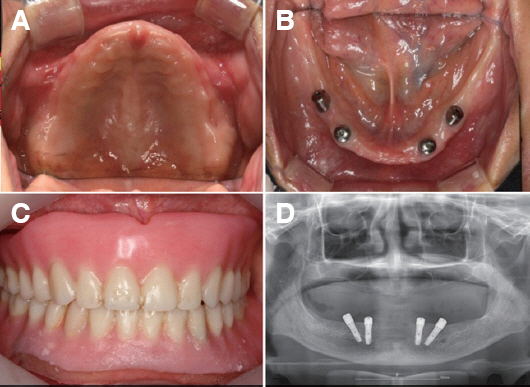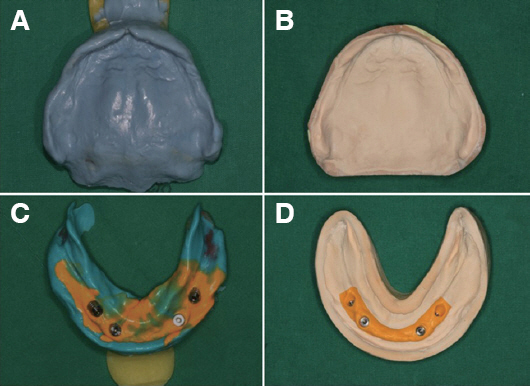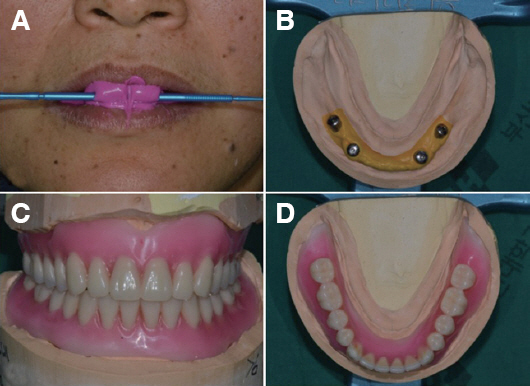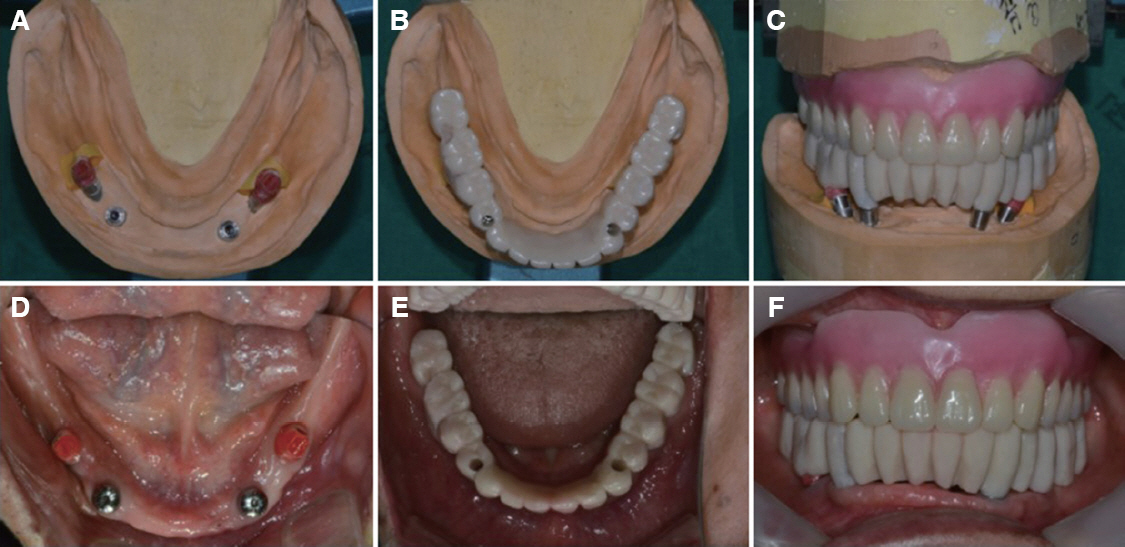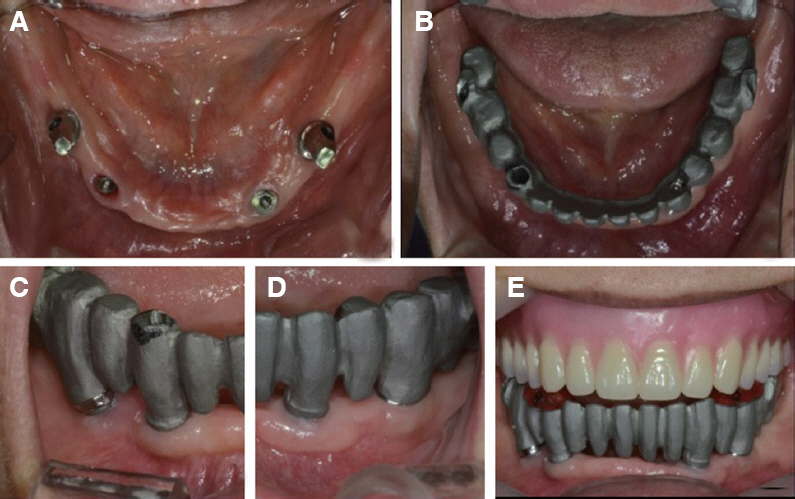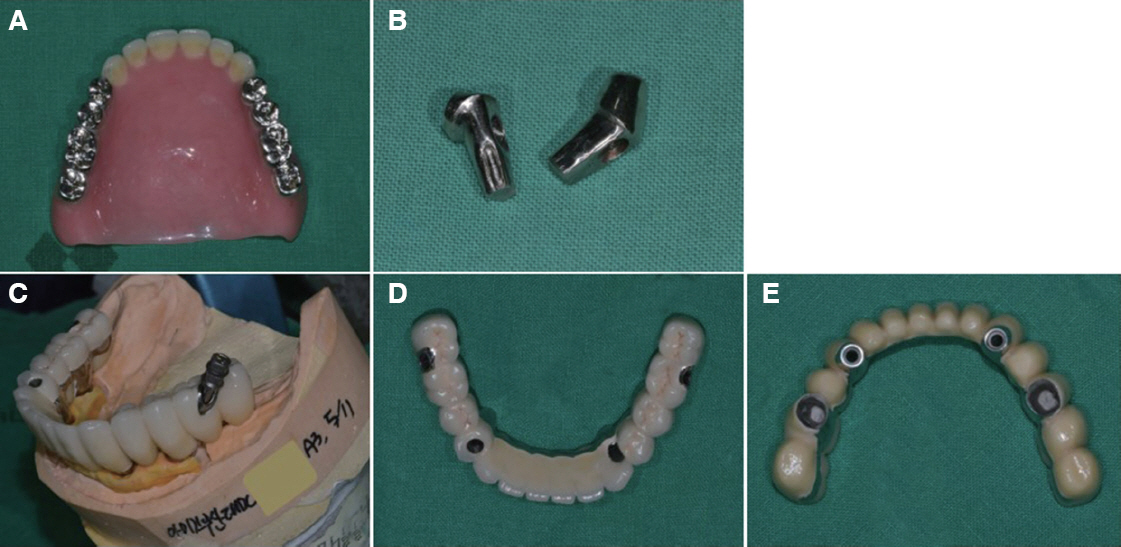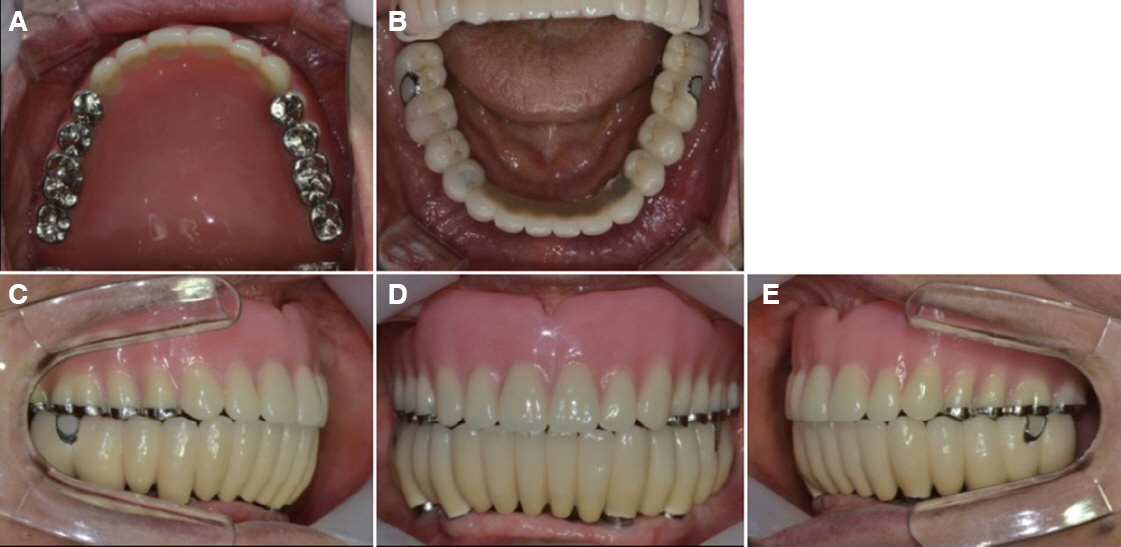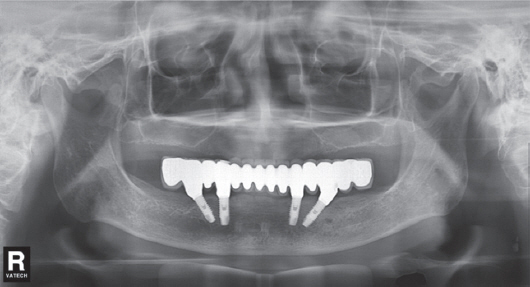J Dent Rehabil Appl Sci.
2019 Mar;35(1):37-45. 10.14368/jdras.2019.35.1.37.
Maxillary complete denture and mandibular All-on-4 implant restoration considering maintenance: a case report
- Affiliations
-
- 1Dental Clinic Center, Pusan National University Hosptial, Busan, Republic of Korea.
- 2Department of Prosthodontics, In-Je University Haeundae Paik Hospital, Busan, Republic of Korea.
- 3Department of Prosthodontics, School of Dentistry, Pusan National University, Yangsan, Republic of Korea. p-venus79@hanmail.net
- KMID: 2450924
- DOI: http://doi.org/10.14368/jdras.2019.35.1.37
Abstract
- In the case of edentulous patients, the total amount of occlusal force is dispersed by the keratinized gingiva during mastication, in result, causing lower masticatory and chewing efficiency. In particular, the mandibular area has more side effects such as pain than the maxilla has. It gets worse when the patient has more absorption of alveolar bone, but the implant treatment is often interrupted due to the existence of the inferior alveolar nerve. In this case, a patient treated with the all-on-4 method by placing the implant in the anterior part of mandible and with the conventional complete denture for the maxilla has maintained without complications and was satisfied with the restoration both functionally and esthetically.
MeSH Terms
Figure
Reference
-
References
1. Rissin L, House JE, Manly RS, Kapur KK. Clinical comparison of masticatory performance and electromyographic activity of patients with complete dentures, overdentures and natural teeth. J Prosthet Dent. 1978; 39:508–11. DOI: 10.1016/S0022-3913(78)80181-4.2. Wismeijer D, Van Waas MA, Vermeeren JI, Mulder J, Kalk W. Patient satisfaction with implant-supported mandibular overdentures. A comparison of three treatment strategies with ITI-dental implants. Int J Oral Maxillofac Surg. 1997; 26:263–7. DOI: 10.1016/S0901-5027(97)80864-8.3. Kim YJ, Jeong SM, Kim KH, Fang JW, Kim DH, Choi BH. Application of digital implant system on implant treatment with “all-on-4” concept. J Korean Acad Prosthodont. 2018; 56:88–94. DOI: 10.4047/jkap.2018.56.1.88.4. Brånemark PI, Svensson B, van Steenberghe D. Ten-year survival rates of fixed prostheses on four or six implants admodum Brånemark in full edentulism. Clin Oral Implants Res. 1995; 6:227–31. DOI: 10.1034/j.1600-0501.1995.060405.x. PMID: 8603114.5. Kim KS, Kim YL, Bae JM, Cho HW. Biomechanical comparison of axial and tilted implants for mandibular full-arch fixed prostheses. Int J Oral Maxillofac Implants. 2011; 26:976–84. PMID: 22010079.6. Brånemark PI, Svensson B, van Steenberghe D. Ten-year survival rates of fixed prostheses on four or six implants admodum Brånemark in full edentulism. Clin Oral Implants Res. 1995; 6:227–31. DOI: 10.1034/j.1600-0501.1995.060405.x. PMID: 8603114.7. Tallgren A. The continuing reduction of the residual alveolar ridges in complete denture wearers:a mixed longitudinal study covering 25 years. J Prosthet Dent. 1972; 27:120–32. DOI: 10.1016/0022-3913(72)90188-6.8. Lang BR, Razzoog ME. Lingualized intergration:tooth molds and an occlusal scheme for edentulous implant patients. Implant Dent. 1992; 1:204–11. DOI: 10.1097/00008505-199200130-00007.9. Adell R, Lekholm U, Rockler B, Brånemark PI. A 15-year study of osseointegrated implants in the treatment of the edentulous jaw. Int J Oral Surg. 1981; 10:387–416. DOI: 10.1016/S0300-9785(81)80077-4.10. Närhi TO, Geertman ME, Hevinga M, Abdo H, Kalk W. Changes in the edentulous maxilla in persons wearing implant-retained mandibular overdentures. J Prosthet Dent. 2000; 84:43–9. DOI: 10.1067/mpr.2000.107113. PMID: 10898841.11. Chung CH, Son MK. The classification and comparison of implant prosthesis according to types of retention. Part I:screw retained prosthesis vs cement retained prosthesis. J Korean Acad Oral Maxillofac Implantology. 2010; 14:138–51.12. Misch CE. Dental implant prosthetics. 1st ed. St. Louis: Mosby;2004. p. 414–6.13. Schuyler CH. Full denture service as influenced by tooth forms and materials. J Prosthet Dent. 1951; 1:33–7. DOI: 10.1016/0022-3913(51)90077-7.
- Full Text Links
- Actions
-
Cited
- CITED
-
- Close
- Share
- Similar articles
-
- Full mouth rehabilitation of an edentulous patient using maxillary complete denture and mandibular implant supported fixed prostheses: a case report
- Fabrication of maxillary complete denture and mandibular implant retained overdenture using CAD-CAM system and Monolithic disc: a case report
- A case of removable partial denture restoration using implant supported surveyed crown in a maxillary edentulous patient
- Implant-assisted removable partial denture restoration in small number of residual teeth in mandible: A case report
- Comparison of treatments for maxillary full denture and mandibular implant-supported fixed prosthesis in completely edentulous patients: A case report

